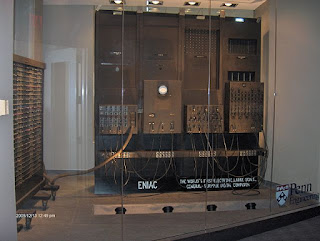THE EIFFEL TOWER
THE EIFFEL TOWER
 The Eiffel Tower is one of the most famous structures in the world. It was named after Alexandre Eiffel whose team of engineers designed it. It cost £260,000 to build in 1889 with most of the money being provided by Eiffel himself and the French state. The Eiffel Tower rises to a height of 985 feet and for over forty years it was the highest structure in the world.
The Eiffel Tower is one of the most famous structures in the world. It was named after Alexandre Eiffel whose team of engineers designed it. It cost £260,000 to build in 1889 with most of the money being provided by Eiffel himself and the French state. The Eiffel Tower rises to a height of 985 feet and for over forty years it was the highest structure in the world.
The top may be reached by using lifts and stairs with the first platform being 189 feet, the second being 380 feet and the third at 906 feet above the ground. The structure is largely composed of triangulated sections and this allowed the engineers to build the tower so high.
It was originally looked upon as a temporary structure, built for the 1889 Worlds Fair. The Worlds Fair coincided with the centenary of the French Revolution.
For forty years it was the tallest man-made structure in the world.
The Eiffel Tower was the entrance arch to the Worlds Fair and it was one of a number of designs entered as part of a competition. Alexandre Gustave Eiffel's company won the competition and so the the Tower became known as the Eiffel Tower. However, it was Morris Koechlin, an employee of Eiffel that designed the thousand foot structure.
Alexandre Eiffel
Morris Koechlin
Koechlin was a junior employees of the Eiffel Construction Business which specialised in the designing and building of bridges and viaducts al over the world. one of his first jobs was to design the framework for the Statues of Liberty.
His first design for the tower was rejected by Alexandre Gustave Eiffel as it was very plain and lacked 'class' and it was only after adding more graceful, ornate features that Eiffel decided to enter it for the competition. Eiffel also stated that he would finance the project to 80% of the cost of construction.
The original idea was for the tower to be dismantled after a twenty year period. However, it was so well built and engineered that it was decided to leave it in position. The various parts (of which there were thousands) were so well engineered that not even one had to be returned to workshops for alteration.
After the first year of opening so much money had be raised from people visiting the tower that the cost of construction was covered and Eiffel became rich.
Alexandre Gustave Eiffel conducted experiments on the tower such as using it as a giant pendulum, a pressure gauge, an instrument for measuring air resistance and atmospheric pressure. In 1898 it was discovered that the tower could also be used a magnificent radio tower. Consequently the Eiffel Tower was saved.



Comments
Post a Comment